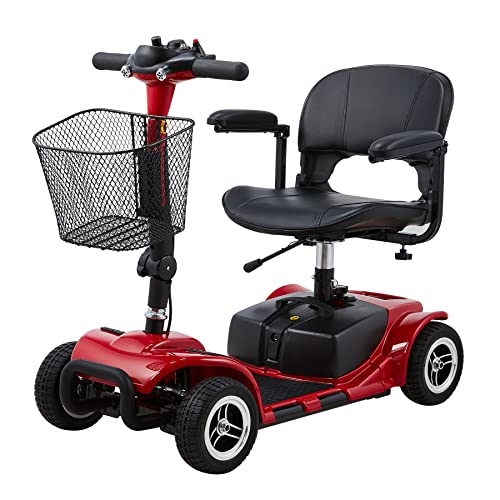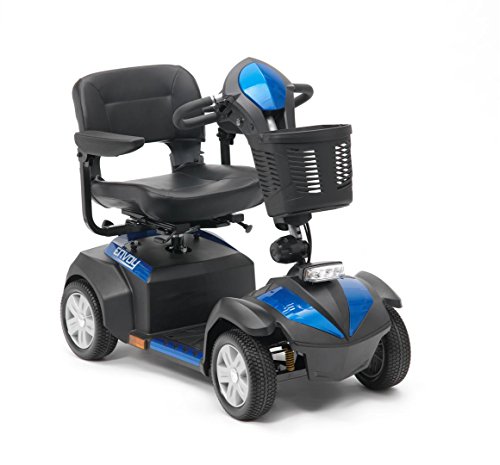The 10 Scariest Things About Mobility Scooters On Pavements Law
페이지 정보

본문
 Mobility scooters are a common mode of transportation for individuals who require a safe and efficient method of navigating their surroundings. It is crucial that users are aware of and understand the local rules and regulations governing best pavement mobility scooter travel.
Mobility scooters are a common mode of transportation for individuals who require a safe and efficient method of navigating their surroundings. It is crucial that users are aware of and understand the local rules and regulations governing best pavement mobility scooter travel.Mobility scooters are able to be operated on sidewalks or pedestrian walkways. However, they must yield to pedestrians and avoid travelling at speeds that may hinder traffic flow.
Class 2 and 3 scooters
If you're thinking of purchasing a mobility scooter your elderly loved one or yourself There are a variety of choices available. You should select the right type of mobility scooters on pavements Law - highwave.Kr, scooter, as there are restrictions on size and turning radius when you are using public transportation. There are also speed limits on sidewalks. It is also important to understand the difference between Class 2 and Class 3 scooters, since they are made to suit different requirements and environments.
Class 2 scooters are made mostly for use on pavements and indoor spaces, with a maximum speed of 4mph. They are perfect for shopping trips, pavement scooters travel and navigating urban spaces in which space is restricted. Unlike Class 3 Scooters, they do not require registration with the DVLA. They are not used on roads (except in areas where there is no best pavement mobility scooter). Class 2 mobility scooters can be a good option for those who commute frequently for short distances or are concerned about their weight.
A Class 3 scooter is a great alternative for those who require an easier solution to their mobility scooters on road or pavement problems. It can be driven on roads up to 8 mph. They should be fitted to limit their speed to 4mph on pavements and shouldn't be driven on cycle or bus paths that are 'cycle-only'. Dual carriageways should not be used, but if they are necessary for safety or if you have an amber flashing light then you may use them.
Class 3 scooters cost more than the Class 2 models because they must comply with more stringent requirements for road use. They also need to have effective brake systems, lighting, and a rearview mirror. The price reflects the extra safety and convenience, but this investment can help people who are unable to drive or walk long distances. You might also need to travel further to catch up with family or friends in certain situations.
Pedestrians
Mobility scooters offer those who have impaired physical or sensory capabilities a safe and convenient method to move around. They provide a lot of independence but must be operated in a safe manner to ensure the security and safety of other users.
Mobility scooters are frequently asked if they can be used on the road. The answer is contingent on local laws and ordinances. Most municipalities restrict road use for mobility scooters to sidewalks and low-traffic city streets. Additionally, most mobility scooters aren't made to keep pace with traffic, and so operating them on busy streets can result in an accident that could severely cause injury to the user.
On sidewalks mobility bikes should be operated at a pace that is in line with pedestrians. In addition they must give the right-of-way to pedestrians, and provide an audible signal when they plan to pass them. It is also important that scooter users obey all posted signs and regulations that pertain to pedestrian routes and crossings. This will improve the safety for both pedestrians as well as scooter riders.
Class 2 scooters are usually used for use on pavements and should have a maximum speed of 4 mph mobility scooter mph. They pose a greater danger to pedestrians than larger scooters. This is the reason it's crucial for owners of scooters to drive with caution and be aware of other users. Additionally, they must be sure to park their scooter in areas that don't hinder pedestrian traffic or restrict access.
In general it is not recommended to operate a mobility scooter on any trail or path that are specifically designated for bicycles. Many state parks and outdoor destinations also have restrictions on the use of motorized scooters. These restrictions are intended to safeguard the environment and to prevent accidents that may harm or injure scooters and other pedestrians. In many cities, there are laws that prohibit scooters from being operated on roads with high traffic.
Parking
Mobility scooters are an excellent option to give independence and freedom to thousands of people in the UK. There are a few rules that must be observed when using these vehicles. These include respecting parking regulations and yielding to pedestrians and making sure that other users. The guidelines ensure that mobility scooters have been properly maintained and do not block pedestrian walkways or sidewalks. It is also crucial to be extra cautious when transferring from the pavement to the road. This is particularly true if you don't have any dropped kerbs in the area.
In general, scooters should not be used on roads unless they are class 3 and are specifically designed for road use. They should not be used on bus or cycle lanes, and should not go over 4 speeds of 4. If you are planning to use your mobility scooter while driving it is a good idea to equip it with reflective materials and lights, so that you can be more visible.
Although mobility scooters aren't required to be equipped with a helmet, it is recommended that you wear a helmet to ensure security. This will enable other drivers to notice you, especially in poor lighting conditions. It is also recommended to avoid the use of headphones and mobile phones, as these could distract you from the surrounding area. Wearing reflective clothing, or putting up a safety sign can assist you in becoming more visible.
It is also necessary to maintain a reasonable speed when you are using your scooter on sidewalks and pedestrian walkways. This will ensure other riders security and reduce the risk of accidents.
There is no need for a license to operate a mobility scooter, but you must be familiar with the local laws before using one. In the majority of places you are only allowed to use them on sidewalks or designated pedestrian walkways. It is not recommended to use them on roads. Always adhere to traffic signals, obey instructions and wear a helmet to increase the safety.
Many people are unaware of the laws governing mobility scooters in their neighborhood or city. There are numerous resources that can help you find the right laws for your area.
Speed
Mobility scooters are not able to be operated faster than normal pedestrians on the sidewalk. They must also yield to pedestrians and signal prior to passing or overtaking them. They should also be equipped with safety equipment, and be aware of other sidewalk users who might be impaired in their vision or hearing. It is recommended that reflective clothing and accessories be used to improve visibility, particularly in areas of low lighting or darkness.
A number of regions have set speed limits for mobility scooters on sidewalks as well as in other pedestrian zones. These limits are usually set at the same speed as a fast stroll, which is safer for pedestrians and scooter users. Scooters must also be outfitted with reflectors and functional lights to make them more visible in low-light conditions or in the dark.
Local governments might require scooters to be registered and insured, similar to motor vehicles. This is to ensure the compliance of local regulations and to minimize the chance of accidents and injuries. The majority of mobility scooters weren't intended to be used on roads, and placing them on roads increases the chance that other road users could be injured or damaged.
While there are no laws that prohibit the use of mobility scooters on roads, it's generally preferable to only use them when necessary, and never at speeds that might endanger pedestrians or other vehicles. The safety of pedestrians must always be given priority, especially those with visual or hearing impairments, who might not be aware of your presence until it's too late.
 Mobility scooters must be kept at a safe distance away from other vehicles. If they are going to be used on roads, they must be equipped with a tyre-pressure sensor or some other device that will alert drivers of low pressure. They should also be inspected regularly to ensure they are in good condition.
Mobility scooters must be kept at a safe distance away from other vehicles. If they are going to be used on roads, they must be equipped with a tyre-pressure sensor or some other device that will alert drivers of low pressure. They should also be inspected regularly to ensure they are in good condition.It's not possible to operate an electric scooter with an driver's license, however some people opt to obtain a permit to practice and become familiar with the vehicle. This is a great method to learn how to ride and build confidence before moving on to a full license. While the requirements for a learner's permit may differ, they typically include taking a driver's test and gaining knowledge of basic road rules and rules and regulations.
- 이전글To Click on Or To not Click on: Kanye West Poster And Running a blog 24.09.19
- 다음글The 10 Scariest Things About Car Boot Scooter 24.09.19
댓글목록
등록된 댓글이 없습니다.


 블로그체험단 바로가기
블로그체험단 바로가기